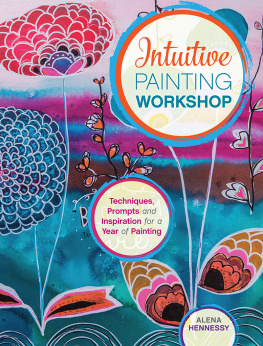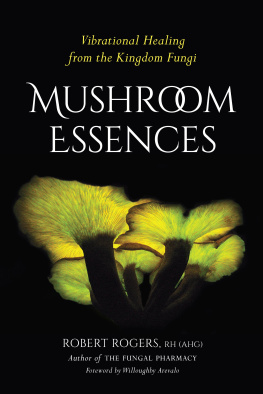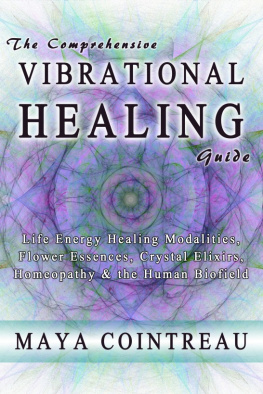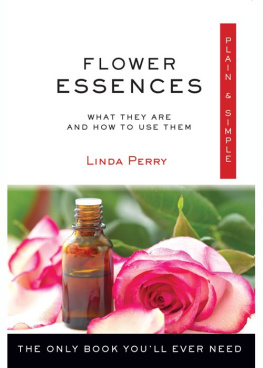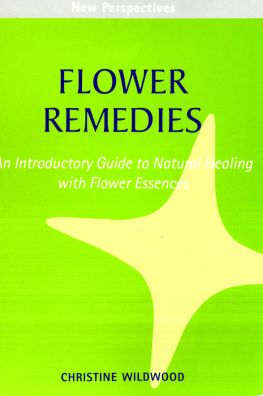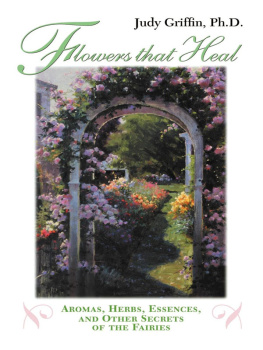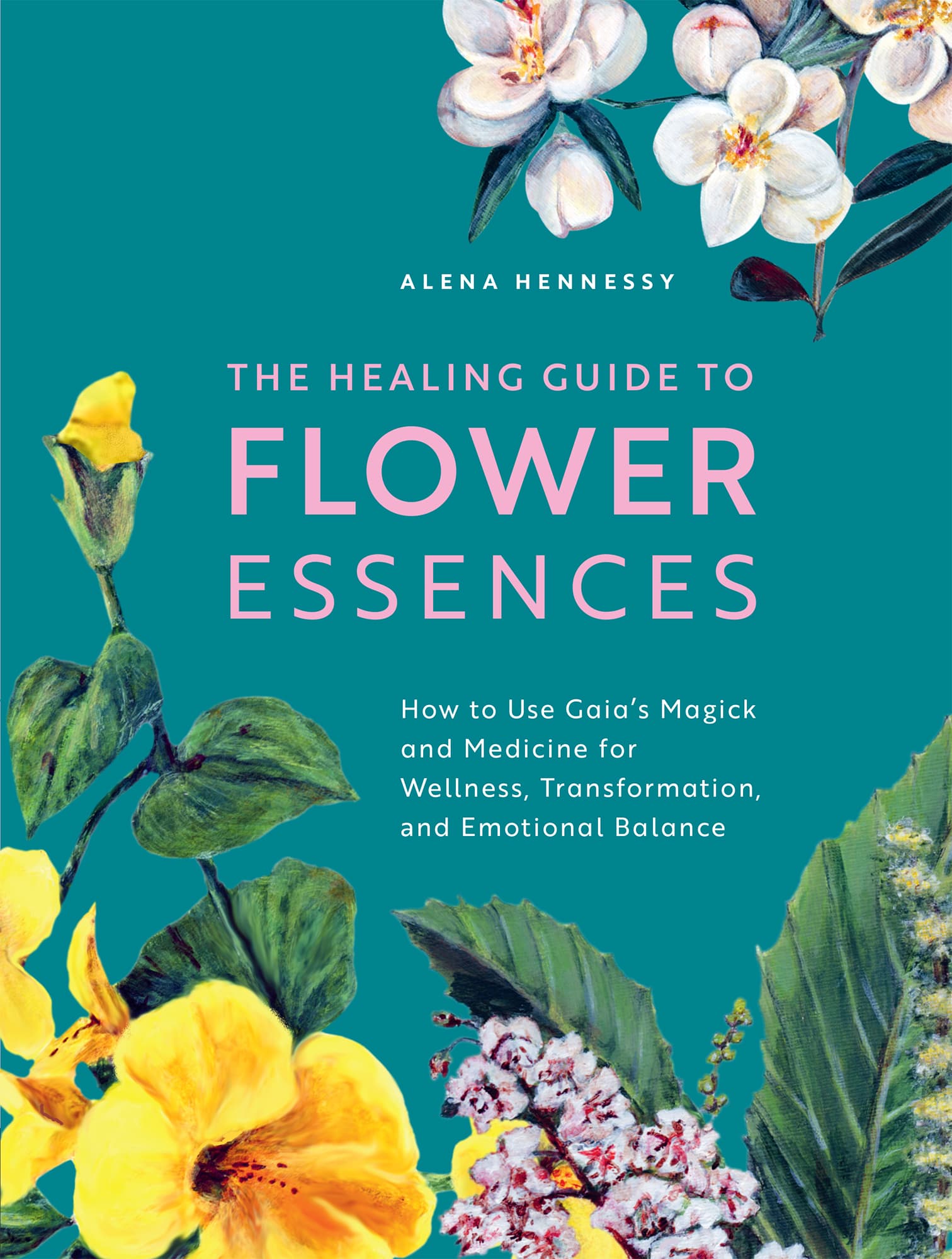THE HEALING GUIDE TO
FLOWER
ESSENCES
How to Use Gaias Magick and Medicine for Wellness, Transformation, and Emotional Balance
ALENA HENNESSY
WITH ART BY
Jane Hennessy

DISCLAIMER
Flower essences are universally known to be safe to ingest; however, please double-check to make sure the flower you choose for your essence is indeed the right one (other, similar-looking flowers can be poisonous). Poisonous plants can be used for flower essences, yet unlike herbal remedies or essential oils, extremely tiny amounts of plant matter are in the formula. Essentially, do your research to make sure that the exact species youve chosen is safe to touch and work with, and also be careful to make sure it has not been sprayed with pesticides or the like. If you are unsure, err on the side of caution and buy a ready-made flower essence from an established maker.
What Flower Essences Actually Are
Flower essences are infusions of the energetic qualities of flowers. They address the nature and wellness of ones soul and emotions, as well as the connection to ones whole being.
Flower essences are made from freshly picked flowers held in spring or distilled water by the sun or light of the moon. After their vibrational medicine is infused into the water, they are diluted further, potentized, and preserved in glass jars and dropper bottles for ingestion.
Flower remedies are a gentle or subtle medicine. That means they work on deeper layers of the emotional body and our subconscious for integration into the souls well-being. The essences are a homeopathic medicine, meaning they work with the main imprinting of pain or trauma, where the imbalance is held within the body. For example, if you are working with low self-esteem, the energetic imprint of the essence works to build confidence and self-worth, and insecure emotions are lowered. Subtle shifts in our energy can cause ripples in our lives for a beautiful and gentle transformational process. When healing takes place in a gentle energy field, as the flowers so sweetly provide, it can be brought into union gracefully with the mind-body-spirit connection and ourselves. The effects of the essence sometimes can be felt right away; other times, subtle shifts unfold day by day until there is a change.
Flower Essences, Essential Oils, and Herbal Tinctures
Flower essences are not to be confused with essential oils or herbal tinctures. Essential oils are chemical compounds from a plant extracted in a distillation process. Theyre often used for aromatherapy because of their potent smell. An herbal tincture is a concentrated medicinal form of a plant that is made by soaking it in alcohol for an extended period of time. Tinctures are used to help heal and balance physical symptoms in the body.
A Little History
Utilizing flowers for their subtle yet transformative powers of healing dates back almost 3,000 years and has occurred in many cultures throughout the world. The ancient Egyptians were known to collect the dew from flowers and use its energetic properties to treat intense emotional states. For centuries, the Chinese have been known to embrace the energetic vibrations of flowers as beneficial for ones well-being. The Balinese have a long history of placing flowers in bathwater and taking a long soak for beauty and rejuvenation.
Hildegard von Bingen (10981179), a mystic, writer, composer, and Benedictine abbess from Germany, was a highly in-tune visionary who later came to be known as Saint Hildegard. She wrote texts about the medicinal, theological, and elemental healing properties of botany and the natural world. She, along with her fellow nuns, would place muslin cloths over flowers to soak up dew. Hildegard had an innate understanding of the doctrine of signatures, the idea that parts of nature, including flowers, have direct counterparts in the human body and can assist in providing restoration and relief. The nuns would collect the muslin in the morning and use it to wrap ill patients as necessary.
The Swiss physician, alchemist, prophet, and botanist Paracelsus (14931541) was a radical medical practitioner because of his views on health and nature. He looked to nature as a true healer instead of the accepted paradigm, which was less holistic. Paracelsus understood the doctrine of signatures philosophy as well; he collected dew from the flowers to treat emotional imbalance, for instance. Paracelsus appreciated the flowers innate ability to provide health to the human body.
Centuries later, the true father of flower essences was Dr. Edward Bach (18861936). Bach was a dedicated physician from London who understood that traditional medicine, or allopathic practices, has its limitations in providing well-being. Dr. Bach became drawn to a homeopathic approach, one in which he embraced the healing power of flowers. He began to collect wildflowers with which to treat patients and noticed positive results. He continued to study and reflect upon the gifts of each of these flowers, as related to treating human beings. To quote Dr. Bach about the magnificent power of flower essence healing:
To raise our vibrations and open up our channels for the reception of our spiritual self, to flood our natures with the particular virtues and to wash out from us the faults which were causing them. They are able, like beautiful music or any gloriously uplifting thing which gives us inspiration, to raise our very natures and bring us nearer to ourselves and by that very act to bring us peace and relieve our suffering. They cure not by attacking disease but by flooding our bodies with beautiful vibrations of our higher nature in the presence of which disease melts as snow in the sunshine.
In the 1930s, he left his successful medical practice and focused solely on working with flowers and their doctrine of signatures for treating patients. He innately understood that his patients physical ailments were related to unintegrated charges from emotional and mental states. To make flower essences, Dr. Bach would place a flower in a glass bowl with water and let it soak for several hours. The water would receive the energetic imprint of that flowers healing capacity. We still use this method today.
Dr. Bachs 38 Essential Remedies
Dr. Bach created a foundation of essential remedies for flower essences, each representing healing powers of vibration for certain characters or negative emotional states. Here are some of the plants he worked with and the negative characteristics they help address:
Agrimony: suffering behind a happy demeanor
Aspen: fear of the unknown
Beech: irritability and lack of compassion
Centaury: lack of boundaries
Cerato: doubting easily
Cherry Plum: fear of losing control
Chestnut Bud: repetition of harmful patterns
Chicory: high expectations in love
Clematis: constant thoughts of the future
Crab Apple: self-loathing
Elm: easily overwhelmed nature
Gentian: feeling discouraged
Gorse: deep despair
Heather: excessive self-interest


